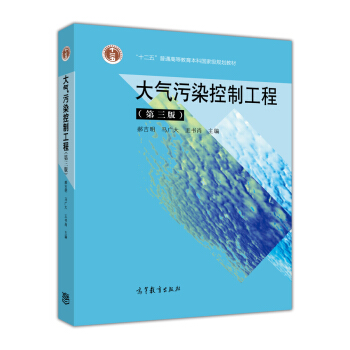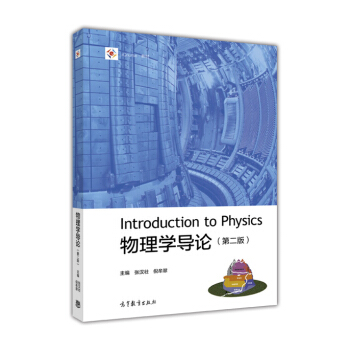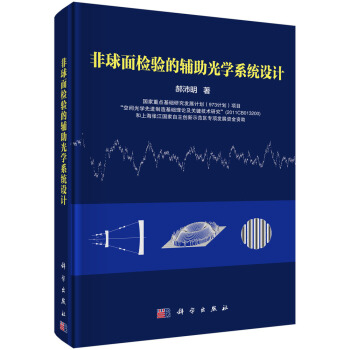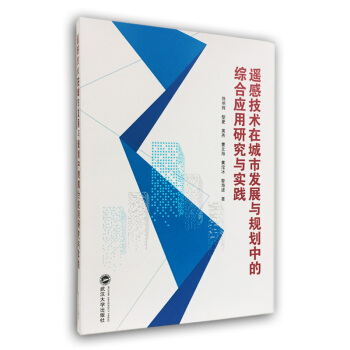![工程数学:复变函数与数学物理方法(英文版)/普通高等教育“十三五”规划教材 [Engineering mathematics——functions of a complex variable and mathematical methods for physics]](https://pic.windowsfront.com/12231753/5a169536N39e714eb.jpg)

具体描述
内容简介
《工程数学:复变函数与数学物理方法(英文版)/普通高等教育“十三五”规划教材》是一本用于同名课程双语教学的英文教材,编者按照国家教育部对本课程的基本要求,参考了多本有关的英文教材,结合多年的教学实践编著而成。《工程数学:复变函数与数学物理方法(英文版)/普通高等教育“十三五”规划教材》包含复变函数和数学物理方法两部分。复变函数部分的内容包括:复数与复变函数的基本概念、复变函数的导数和积分、解析函数的定义和性质、解析函数的幂级数表示、留数定理及其应用等。数学物理方法部分的内容包括:三类典型方程的导出和定解问题的定义、二阶线性偏微分方程的分类和化简以及达朗贝尔公式求解波动方程、分离变量法求解定解问题和特征值问题、贝塞尔函数和勒让德多项式、傅里叶变换和拉普拉斯变换。《工程数学:复变函数与数学物理方法(英文版)/普通高等教育“十三五”规划教材》可作为理工科院校非数学专业本科生的双语教材,也可供有关工程技术人员参考。
目录
Part Ⅰ Functions of a Complex VariableChapter 1 Complex Numbers and Complex Functions
1.1 Complex number and its operations
1.1.1 Complex number and its expression
1.1.2 The operations of complex numbers
1.1.3 Regions in the complex plane
Exercises 1.1
1.2 Functions of a complex variable
1.2.1 Definition of function of a complex variable
1.2.2 Complex mappings
Exercises 1.2
1.3 Limit and continuity of a complex function
1.3.1 Limit of a complex function
1.3.2 Continuity of a complex function
Exercises 1.3
Chapter 2 Analytic Functions
2.1 Derivatives of complex functions
2.1.1 Derivatives
2.1.2 Some properties of derivatives
2.1.3 A necessary condition on differentiability
2.1.4 Sufficient conditions on differentiability
Exercises 2.1
2.2 Analytic functions
2.2.1 Analytic functions
2.2.2 Harmonic functions
Exercises 2.2
2.3 Elementary functions
2.3.1 Exponential functions
2.3.2 Logarithmic functions
2.3.3 Complex exponents
2.3.4 Trigonometric functions
2.3.5 Hyperbolic functions
2.3.6 Inverse trigonometric and hyperbolic functions
Exercises 2.3
Chapter 3 Integral of Complex Function
3.1 Derivatives and definite integrals of functions w(t)
3.1.1 Derivatives of functions w(t)
3.1.2 Definite integrals of functions w(t)
Exercises 3.1
3.2 Contour integral
3.2.1 Contour
3.2.2 Definition of contour integra
3.2.3 Antiderivatives
Exercises 3.2
3.3 Cauchy integral theorem
3.3.1 Cauchy�睪oursat theorem
3.3.2 Simply and multiply connected domains
Exercises 3.3
3.4 Cauchy integral formula and derivatives of analytic functions
3.4.1 Cauchy integral formula
3.4.2 Higher�瞣rder derivatives formula of analytic functions
Exercises 3.4
Chapter 4 Complex Series
4.1 Complex series and its convergence
4.1.1 Complex sequences and its convergence
4.1.2 Complex series and its convergence
Exercises 4.1
4.2 Power series
4.2.1 The definition of power series
4.2.2 The convergence of power series
4.2.3 The operations of power series
Exercises 4.2
4.3 Taylor series
4.3.1 Taylor's theorem
4.3.2 Taylor expansions of analytic functions
Exercises 4.3
4.4 Laurent series
4.4.1 Laurent's theorem
4.4.2 Laurent series expansion of analytic functions
Exercises 4.4
Chapter 5 Residues and Its Application
5.1 Three types of isolated singular points
Exercises 5.1
5.2 Residues and Cauchy's residue theorem
Exercises 5.2
5.3 Application of residues on definite integrals
5.3.1 Improper integrals
5.3.2 Improper integrals involving sines and cosines
5.3.3 Integrals on [0,2穑? involving sines and cosines
Exercises 5.3
Part Ⅱ Mathematical Methods for Physics
Chapter 6 Equations of Mathematical Physics and
Problems for Defining Solutions
6.1 Basic concept and definition
6.1.1 Basic concept
6.1.2 Linear operator and linear composition
6.1.3 Calculation rule of operator
6.2 Three typical
Partial differential equations and problems for defining solutions
6.2.1 Wave equations and physical derivations
6.2.2 Heat (conduction) equations and physical derivations
6.2.3 Laplace equations and physical derivations
6.3 Well�瞤osed problem
6.3.1 Initial conditions
6.3.2 Boundary conditions
Chapter 7 Classification and Simplification for Linear Second Order PDEs
7.1 Classification of linear second order
Partial differential equations with two
variables
Exercises 7.1
7.2 Simplification to standard forms
Exercises 7.2
Chapter 8 Integral Method on Characteristics
8.1 D'Alembert formula for one dimensional infinite string oscillation
Exercises 8.1
8.2 Small oscillations of semi�瞚nfinite string with rigidly fixed or free ends, method
of prolongation
Exercises 8.2
8.3 Integral method on characteristics for other second order PDEs, some examples162
Exercises 8.3
Chapter 9 The Method of Separation of Variables on Finite Region
9.1 Separation of variables for (1 1)�瞕imensional homogeneous equations
9.1.1 Separation of variables for wave equation on finite region
9.1.2 Separation of variables for heat equation on finite region
Exercises 9.1
9.2 Separation of variables for 2�瞕imensional Laplace equations
9.2.1 Laplace equation with rectangular boundary
9.2.2 Laplace equation with circular boundary
Exercises 9.2
9.3 Nonhomogeneous equations and nonhomogeneous boundary conditions
Exercises 9.3
9.4 Sturm�睱iouville eigenvalue problem
Exercises 9.4
Chapter 10 Special Functions
10.1 Bessel function
10.1.1 Introduction to the Bessel equation
10.1.2 The solution of the Bessel equation
10.1.3 The recurrence formula of the Bessel function
10.1.4 The properties of the Bessel function
10.1.5 Application of Bessel function
Exercises 10.1
10.2 Legendre polynomial
10.2.1 Introduction of the Legendre equation
10.2.2 The solution of the Legendre equation
10.2.3 The properties of the Legendre polynomial and recurrence formula
10.2.4 Application of Legendre polynomial
Exercises 10.2
Chapter 11 Integral Transformations
11.1 Fourier integral transformation
11.1.1 Definition of Fourier integral transformation
11.1.2 The properties of Fourier integral transformation
11.1.3 Convolution and its Fourier transformation
11.1.4 Application of Fourier integral transformation
Exercises 11.1
11.2 Laplace integral transformation
11.2.1 Definition of Laplace transformation
11.2.2 Properties of Laplace transformation
11.2.3 Convolution and its Laplace transformation
11.2.4 Application of Laplace integral transformation
Exercises 11.2
References
用户评价
作为一本面向物理学研究者的辅助教材,它在“数学物理方法”部分的选材和深度把握上,可谓是恰到好处,体现出一种高度的实用主义精神。很多其他教材在处理偏微分方程的求解时,往往陷入纯数学的泥沼,把重点放在了算术的繁琐上,而这本书则始终紧扣物理图像。比如在讨论拉普拉斯方程的格林函数时,作者清晰地阐述了它在静电场和热传导问题中的物理意义,而不是简单地罗列分离变量法。这种“物理先行”的叙事方式,极大地降低了我们这些非数学专业背景读者的学习门槛。我个人尤其欣赏它对傅里叶变换和拉普拉斯逆变换在信号处理和量子力学中波函数演化应用的讲解,那些关键的积分和级数展开,处理得干净利落,没有丝毫拖沓。这本书成功地架设了一座坚实的桥梁,连接了抽象的数学工具与具体的物理现象,使得原本让人望而生畏的数学工具,瞬间变得鲜活起来,充满了解决实际问题的力量。
评分这本书的装帧设计着实让人眼前一亮,封面那种沉稳的深蓝色调,配上简洁有力的白色字体,透着一股学者的严谨气息。拿到手上,能明显感觉到纸张的质感很好,不是那种廉价的、摸起来滑腻的纸,而是带着一点点粗粝感的,让人觉得这是本经得起时间考验的工具书。侧边勒口的处理也相当到位,翻页的时候很顺畅,而且整体的装订非常牢固,即便是经常需要翻查索引和例题,也完全不用担心书脊会散架。我尤其欣赏它在排版上的用心,字体大小适中,行距设置得非常合理,即便是长时间阅读那些密集的公式和证明过程,眼睛也不会感到特别疲劳。而且,书中的图表清晰度极高,那些表示复杂函数的图形,线条锐利,坐标轴的标注精确无误,这对于理解抽象的几何概念至关重要。可以说,光是这本书的“硬件”配置,就足以让我在书架上把它放在一个非常显眼的位置,每次拿起都会有一种对待珍贵文献的仪式感。这种对细节的关注,也从侧面反映了编著者对教材质量的最高追求。
评分从学习体验的角度来看,这本书最大的价值在于它对“方法论”的强调,而非仅仅是知识点的堆砌。它不仅仅告诉你“是什么”,更重要的是教会你“如何去想”。在处理诸如留数定理求解实积分这种技巧性极强的内容时,作者并没有简单地给出求解步骤,而是深入剖析了为什么选择特定路径、为什么需要引入“无穷远处”的概念,以及这些选择背后的数学原理是如何保证结果的普适性。这种对“幕后工作”的揭示,极大地提升了我对数学工具的信任感和驾驭能力。我曾尝试用其他一些教材来学习这部分内容,但往往只能死记硬背步骤,一旦遇到变体问题就束手无策。但通过研读此书,我逐渐建立起了一种灵活应对问题的框架思维。可以说,它培养的不是一个计算熟练的“匠人”,而是一个能够独立构建模型和解决未知难题的“工程师”。这种能力上的提升,才是对我未来科研生涯最具深远影响的收获。
评分这本书在内容的组织逻辑上,展现出一种近乎完美的“庖丁解牛”式的清晰度。它并没有一开始就将读者抛入那些晦涩难懂的深渊,而是采取了一种循序渐进的教学策略。初学者会发现,基础概念的引入非常自然,每一个新术语的提出,都伴随着详尽且易于理解的背景铺垫和直观的几何解释。尤其是对复变函数中的“共形映射”那一部分的处理,作者巧妙地穿插了大量的实例动画式的描述,使得原本抽象的旋转、拉伸、缩放过程,仿佛可以跃然纸上。更值得称道的是,它在每一个章节末尾设置的“思考与探究”环节,这些问题往往不是简单的计算题,而是引导读者去思考定理背后的深层意义,甚至触及到物理学应用的前沿。这种设计极大地激发了我的批判性思维,让我不再满足于“知道怎么算”,而是开始追问“为什么这样算”。对我而言,它更像一位耐心且博学的导师,时刻在我身旁点拨,而不是一本冷冰冰的公式手册。
评分这本书的语言风格非常独特,它糅合了英式数学的严谨与美式工程的直率,读起来有一种非常舒展的节奏感。它避免了过度冗长和不必要的术语堆砌,句子结构精炼,逻辑推进如同机械运作般精准可靠。例如,在定义勒让德多项式或贝塞尔函数时,作者总能用最精炼的语言勾勒出其核心属性,随后立刻跟进一个经典的物理背景应用作为佐证。这种行文的张力,使得阅读过程充满了发现的乐趣。我发现自己很少需要反复回溯阅读同一段文字,因为作者在第一遍介绍时,就已经将所有必要的语境都搭建完毕。此外,书中对国际标准符号的统一使用,以及对公式编号和引用的规范化处理,极大地提升了我在查阅和引用时的工作效率。这不仅仅是一本学习用书,更是一本值得长期参考的、符合行业规范的参考手册,它的简洁性,反而彰显了其内容的厚重。
相关图书
本站所有内容均为互联网搜索引擎提供的公开搜索信息,本站不存储任何数据与内容,任何内容与数据均与本站无关,如有需要请联系相关搜索引擎包括但不限于百度,google,bing,sogou 等
© 2025 book.coffeedeals.club All Rights Reserved. 静流书站 版权所有


![生态帝国主义:欧洲的生物扩张,900-1900 [Ecological Imperialism: the Biological Expansion of Europe,900——1900] pdf epub mobi 电子书 下载](https://pic.windowsfront.com/12232793/5a2605d5Nf50af778.jpg)


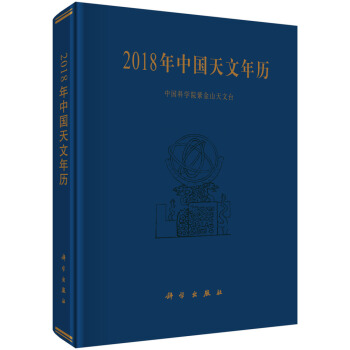




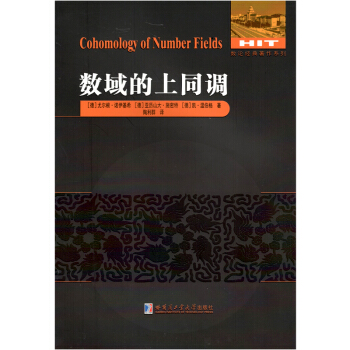
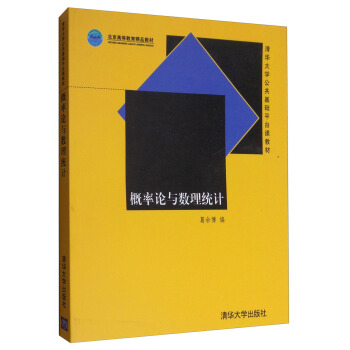



![未完成的进化:为什么大猩猩没有主宰世界 [Darwin’s Unfinished Symphony] pdf epub mobi 电子书 下载](https://pic.windowsfront.com/12237095/5a1d20edN31b5ca68.jpg)

